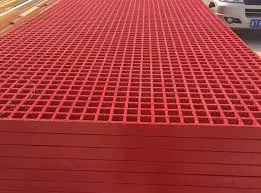
-
 Afrikaans
Afrikaans -
 Albanian
Albanian -
 Amharic
Amharic -
 Arabic
Arabic -
 Armenian
Armenian -
 Azerbaijani
Azerbaijani -
 Basque
Basque -
 Belarusian
Belarusian -
 Bengali
Bengali -
 Bosnian
Bosnian -
 Bulgarian
Bulgarian -
 Catalan
Catalan -
 Cebuano
Cebuano -
 China
China -
 China (Taiwan)
China (Taiwan) -
 Corsican
Corsican -
 Croatian
Croatian -
 Czech
Czech -
 Danish
Danish -
 Dutch
Dutch -
 English
English -
 Esperanto
Esperanto -
 Estonian
Estonian -
 Finnish
Finnish -
 French
French -
 Frisian
Frisian -
 Galician
Galician -
 Georgian
Georgian -
 German
German -
 Greek
Greek -
 Gujarati
Gujarati -
 Haitian Creole
Haitian Creole -
 hausa
hausa -
 hawaiian
hawaiian -
 Hebrew
Hebrew -
 Hindi
Hindi -
 Miao
Miao -
 Hungarian
Hungarian -
 Icelandic
Icelandic -
 igbo
igbo -
 Indonesian
Indonesian -
 irish
irish -
 Italian
Italian -
 Japanese
Japanese -
 Javanese
Javanese -
 Kannada
Kannada -
 kazakh
kazakh -
 Khmer
Khmer -
 Rwandese
Rwandese -
 Korean
Korean -
 Kurdish
Kurdish -
 Kyrgyz
Kyrgyz -
 Lao
Lao -
 Latin
Latin -
 Latvian
Latvian -
 Lithuanian
Lithuanian -
 Luxembourgish
Luxembourgish -
 Macedonian
Macedonian -
 Malgashi
Malgashi -
 Malay
Malay -
 Malayalam
Malayalam -
 Maltese
Maltese -
 Maori
Maori -
 Marathi
Marathi -
 Mongolian
Mongolian -
 Myanmar
Myanmar -
 Nepali
Nepali -
 Norwegian
Norwegian -
 Norwegian
Norwegian -
 Occitan
Occitan -
 Pashto
Pashto -
 Persian
Persian -
 Polish
Polish -
 Portuguese
Portuguese -
 Punjabi
Punjabi -
 Romanian
Romanian -
 Russian
Russian -
 Samoan
Samoan -
 Scottish Gaelic
Scottish Gaelic -
 Serbian
Serbian -
 Sesotho
Sesotho -
 Shona
Shona -
 Sindhi
Sindhi -
 Sinhala
Sinhala -
 Slovak
Slovak -
 Slovenian
Slovenian -
 Somali
Somali -
 Spanish
Spanish -
 Sundanese
Sundanese -
 Swahili
Swahili -
 Swedish
Swedish -
 Tagalog
Tagalog -
 Tajik
Tajik -
 Tamil
Tamil -
 Tatar
Tatar -
 Telugu
Telugu -
 Thai
Thai -
 Turkish
Turkish -
 Turkmen
Turkmen -
 Ukrainian
Ukrainian -
 Urdu
Urdu -
 Uighur
Uighur -
 Uzbek
Uzbek -
 Vietnamese
Vietnamese -
 Welsh
Welsh -
 Bantu
Bantu -
 Yiddish
Yiddish -
 Yoruba
Yoruba -
 Zulu
Zulu
frp absorber
Understanding FRP Absorbers A Comprehensive Overview
Fiber Reinforced Polymer (FRP) absorbers have emerged as a significant innovation in engineering materials, particularly in the fields of civil engineering, aerospace, and automotive industries. These absorbers are constructed from polymer resins that are reinforced with fibers, such as glass, carbon, or aramid, to enhance their mechanical properties, durability, and overall performance.
Understanding FRP Absorbers A Comprehensive Overview
In the automotive industry, FRP absorbers play a crucial role in improving comfort and safety. They are often used in vehicle frames and body panels to reduce weight without compromising structural integrity. This weight reduction not only enhances fuel efficiency but also improves handling and overall performance. Moreover, FRP materials can be engineered to absorb energy during collisions, providing better protection for passengers.
frp absorber

Another significant advantage of FRP absorbers is their resistance to environmental factors. Unlike traditional materials like metals, FRP is less susceptible to corrosion, moisture, and extreme temperatures. This quality extends the lifespan of structures and components, resulting in lower maintenance costs and increased reliability. Consequently, FRP absorbers are increasingly being used in infrastructure projects, such as bridges and highways, where durability and longevity are paramount.
Sustainability is another crucial aspect of FRP absorbers. As the world moves toward more environmentally friendly solutions, the recyclable nature of certain FRP materials makes them a popular choice. Innovative methods are being developed to recycle and repurpose FRP components, reducing waste and promoting sustainability in construction and manufacturing processes.
In conclusion, FRP absorbers represent a leap forward in material science, offering exceptional versatility and performance. Their applications range from noise reduction in buildings to enhancing safety in vehicles and infrastructure. As advancements continue in manufacturing techniques and material formulations, the role of FRP absorbers is set to expand even further, making them an integral component of modern engineering solutions. Whether in terms of efficiency, safety, or sustainability, FRP absorbers are at the forefront of innovation in the materials industry.
Latest news
-
Exploring the Benefits of Top Hammer Drifter Rods for Enhanced Drilling PerformanceNewsJun.10,2025
-
High-Precision Fiberglass Winding Machine for GRP/FRP Pipe Production – Reliable & Efficient SolutionsNewsJun.10,2025
-
FRP Pipes & Fittings for Shipbuilding - Corrosion-Resistant & LightweightNewsJun.09,2025
-
Premium FRP Flooring Solutions Durable & Slip-ResistantNewsJun.09,2025
-
Premium Fiberglass Rectangular Tanks Durable & Lightweight SolutionNewsJun.09,2025
-
Tapered Drill String Design Guide Durable Performance & UsesNewsJun.09,2025









